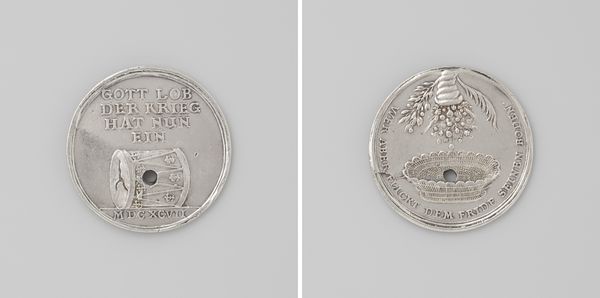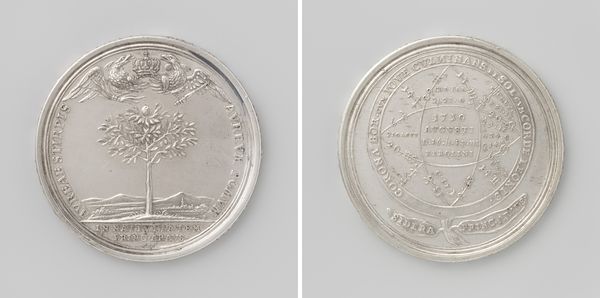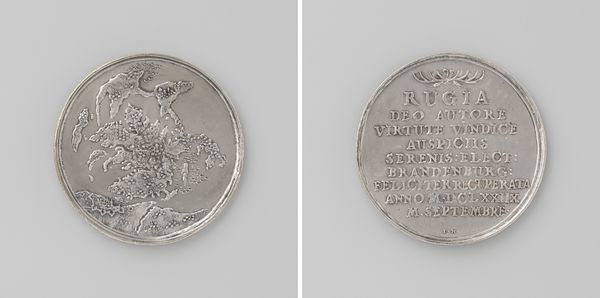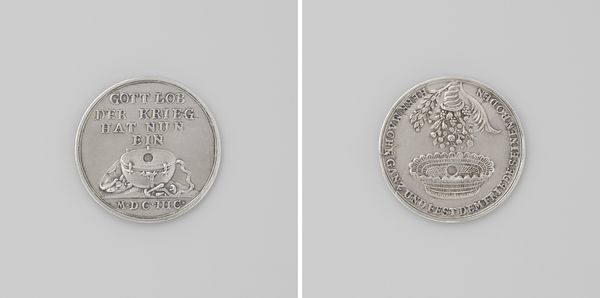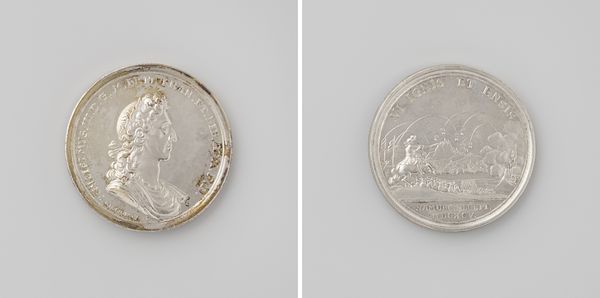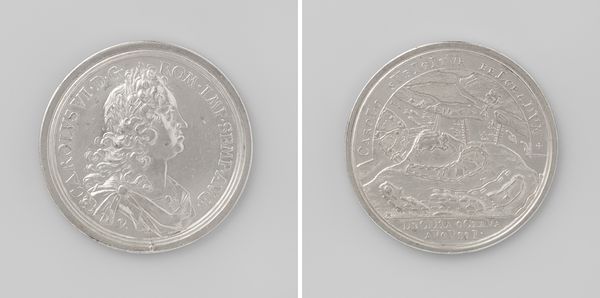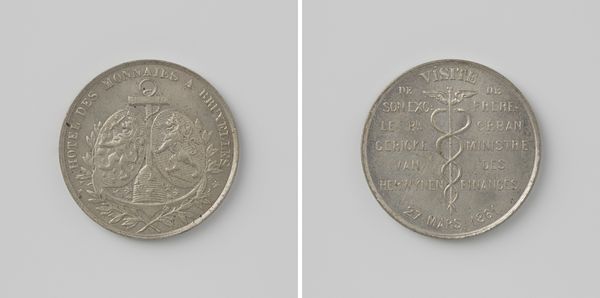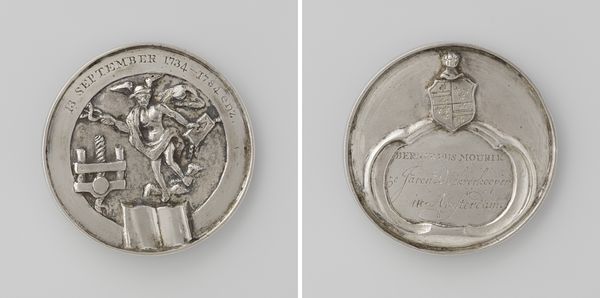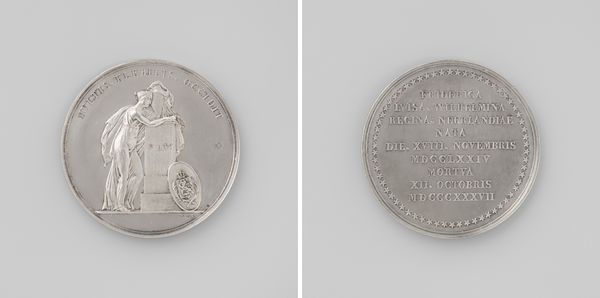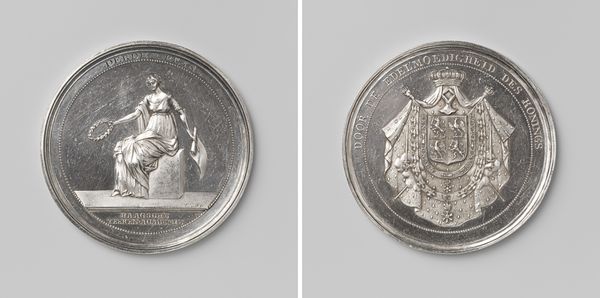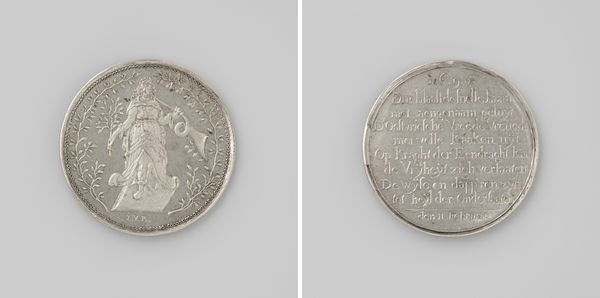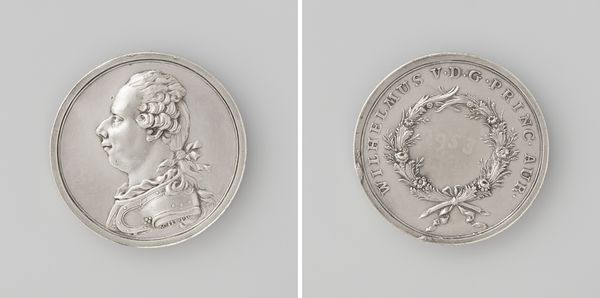
metal, relief
portrait
neoclacissism
decorative element
metal
relief
old engraving style
geometric
ancient-mediterranean
history-painting
decorative-art
Dimensions: diameter 3.5 cm, weight 89 gr
Copyright: Rijks Museum: Open Domain
Curator: What a fascinating piece! This is a medal, crafted in metal relief, commemorating the 25th anniversary of the Maatschappij tot Nut van 't Algemeen, or the Society for Public Welfare, back in 1809. It's attributed to Hendrik Lageman. Editor: It strikes me as quite formal. The cool, silvery tone and the figure reminiscent of classical antiquity—very proper and civic-minded. Almost cold. Curator: Indeed, the Neoclassical style was often used to convey authority and virtue, aligning the present with the perceived glories of the past. The imagery and style choices were very deliberate, signaling stability and reason in turbulent times post-French Revolution and during the Napoleonic era. Editor: I see it now! And how does the Society play into this aesthetic? I can tell from the imagery on one side, with the seated figure holding a torch aloft and geometric decoration, that it's tied to enlightenment ideals... Curator: Precisely! The Society for Public Welfare promoted education and social reform. The torch symbolizes enlightenment and knowledge. Consider its impact through social class. Education was believed the pathway to improvement. But who defines what improvement means? The implicit narratives, I think, are key here. Editor: So it's a message about civic virtue and progress directed at a specific audience. And how would this circulate, as a medal? Curator: These medals were likely commissioned for members or patrons of the society, functioning as awards but also as tokens of belonging. Look at the other side of the coin where we see the anniversary date written in simple terms. Editor: It all becomes a tool for promoting and consolidating social influence. Thank you for this explanation! Curator: My pleasure! Understanding these artifacts in the context of their time allows us to reflect critically on our contemporary societal structures.
Comments
No comments
Be the first to comment and join the conversation on the ultimate creative platform.
